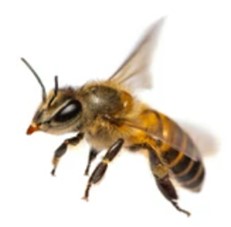
Bee is winged insects closely related to wasps and ants, known for their roles in pollination. There are over 16,000 known species of bees in seven recognized biological families. Some species-including honey bees, bumblebees, and stingless bees-live socially in colonies while most species (>90%)-including mason bees, carpenter bees, leafcutter bees, and sweat bees-are solitary. Bees feed on nectar and pollen, the former primarily as an energy source and the latter primarily for protein and other nutrients. Most pollen is used as food for their larvae.
Bee pollination is important both ecologically and commercially, and the decline in wild bees has increased the value of pollination by commercially managed hives of honey bees. Lifeasible provides gene editing services for bee with CRISPR/Cas9 to optimize the genetic traits of bee.
| Editable genes | Relevant traits exhibited after editing |
| fem |
|
| Ampabp2 |
|
| amYki |
|
| lncRNA13164 |
|
| Stk e3ul or1 |
|
| PIP5KI |
|
Lifeasible provides gene editing services for bee through the system of CRISPR/Cas9. We first determine the sgRNA sequence of the target gene, and then synthesize the sgRNA of the target gene. We then microinject the edited material on the dorsal caudal or ventral proximal rostral side of the bee eggs, and perform post-incubation of the injected eggs. After PCR amplification of the injected egg target gene, the obtained PCR amplification product was sequenced to obtain the gene editing result of the target gene.
Lifeasible provides gene editing services for bee by CRISPR/Cas9 to affect the immune system, and other growth and development stages of bee with low risk. If you are interested in our services or if you have any questions, please click online inquiry for more detailed information.